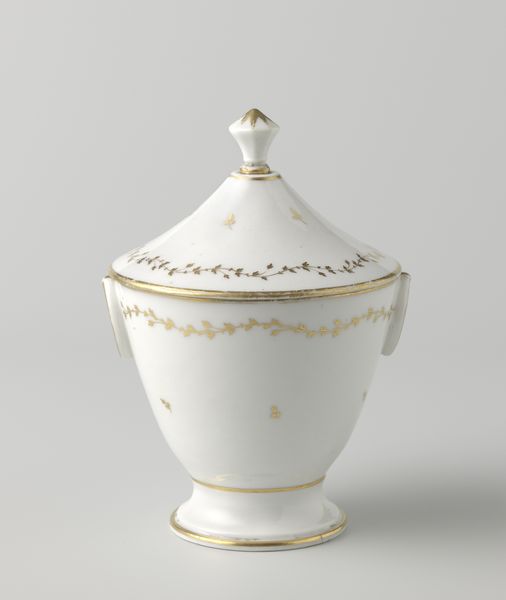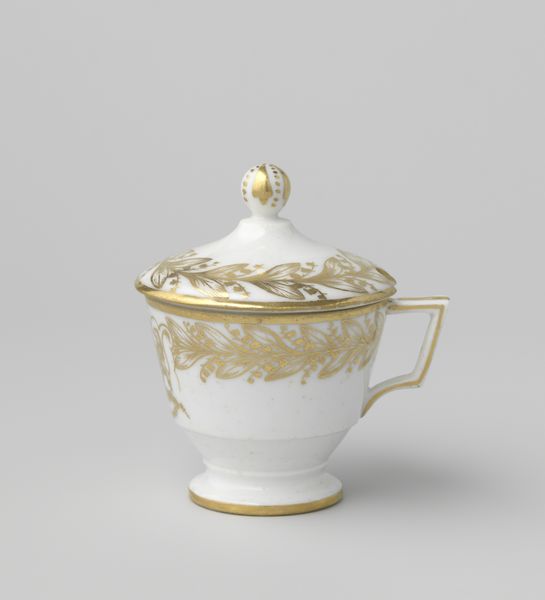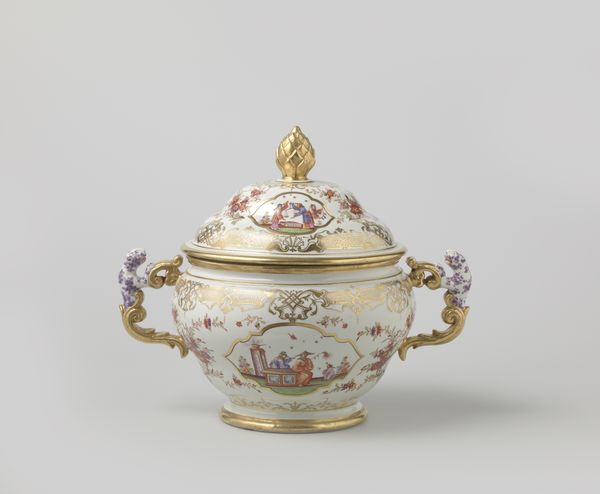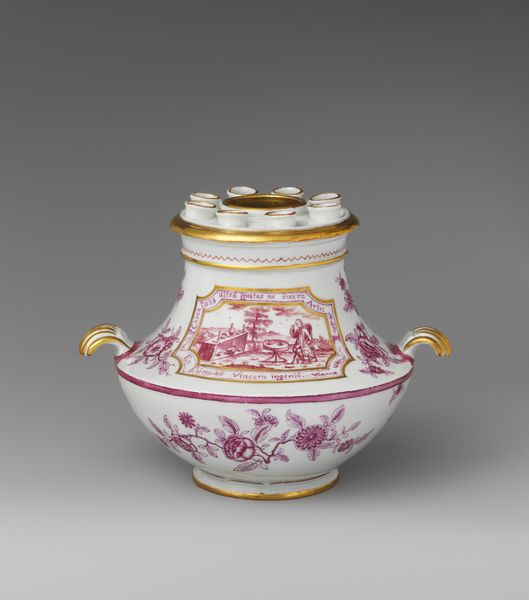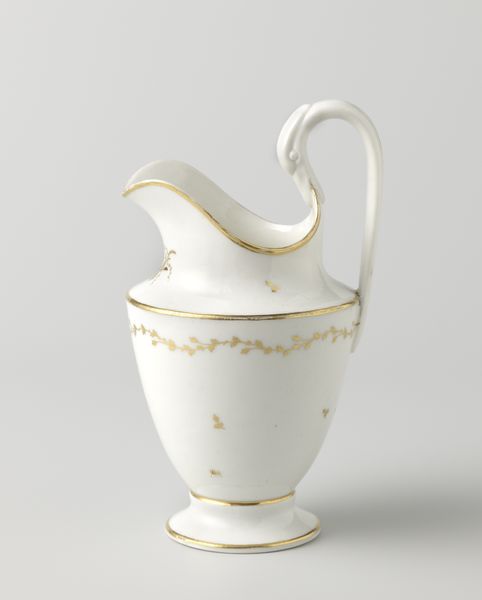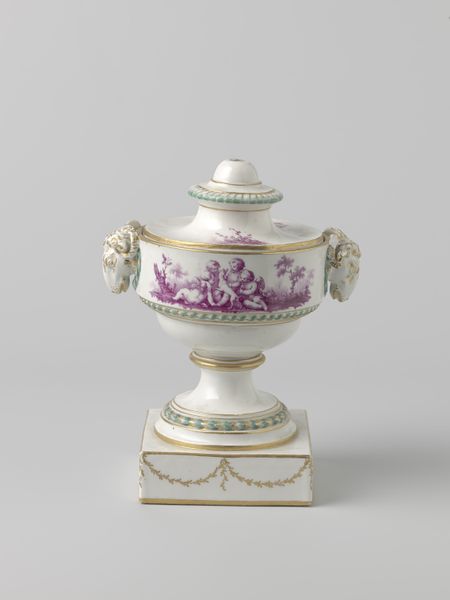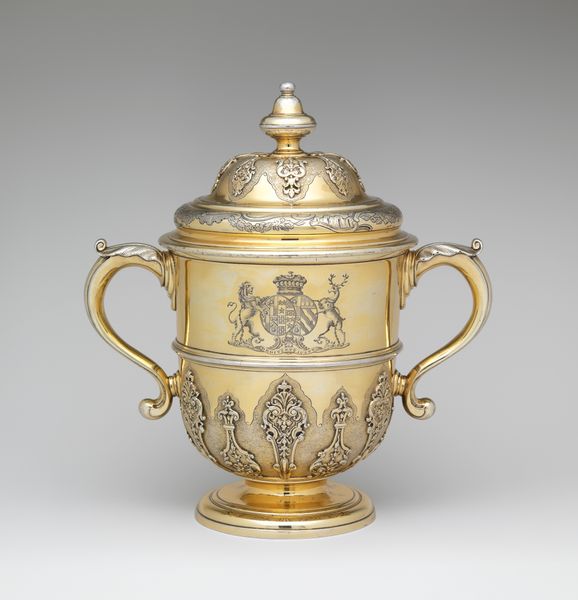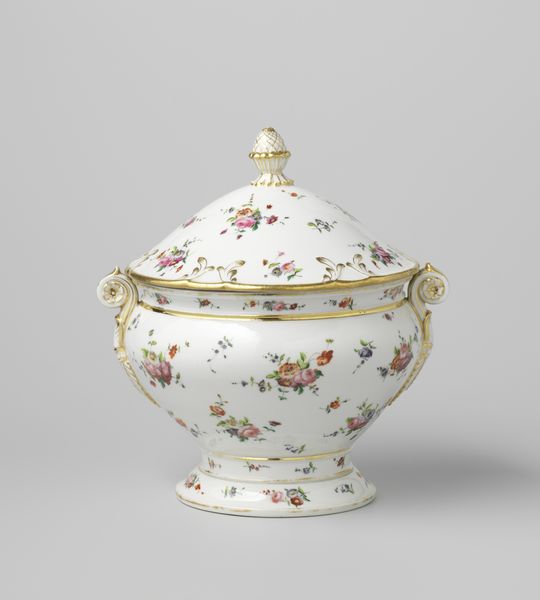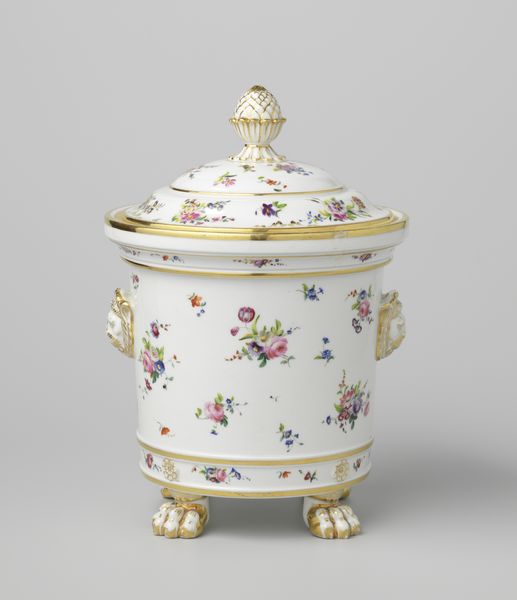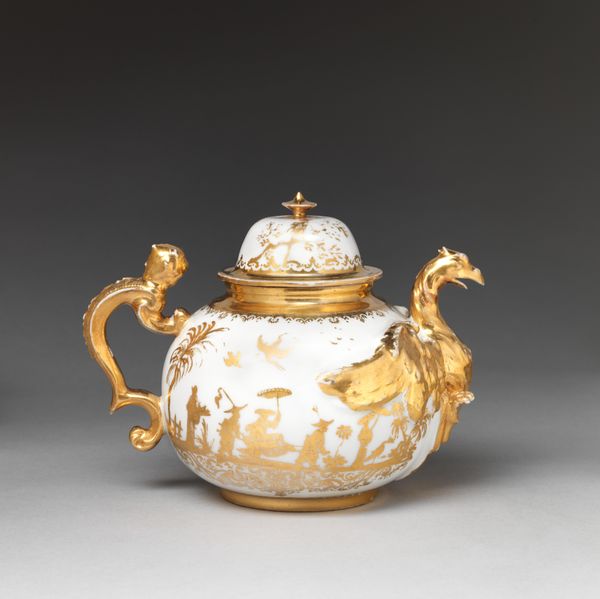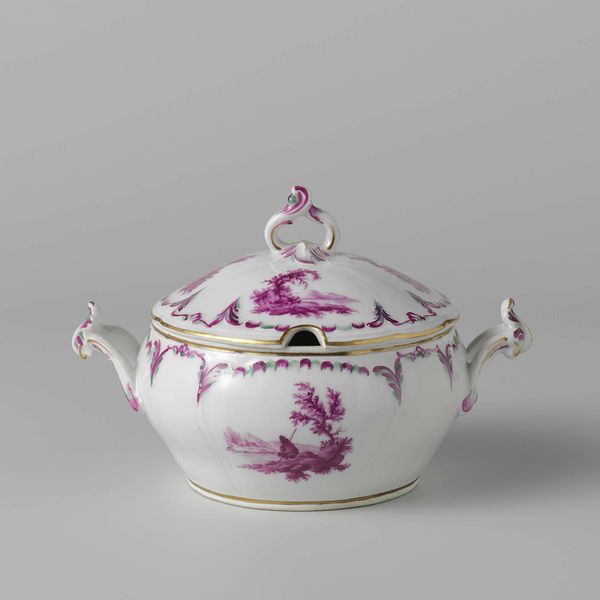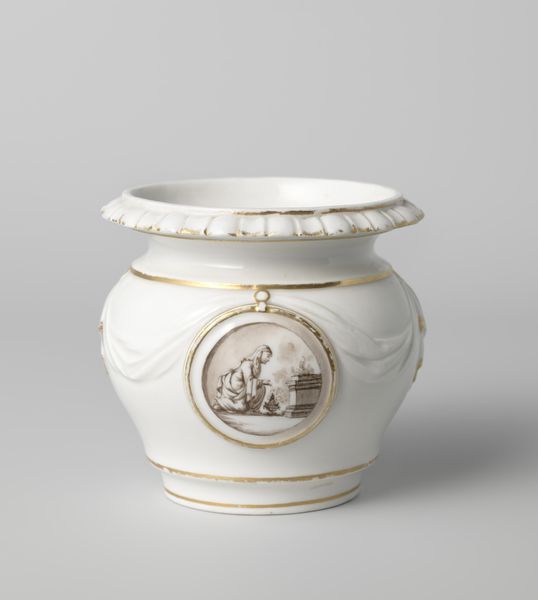
Tureen with the coat of arms of Hendrik Peter Godfried Quack and Isabella Gertraud von Carnap c. 1790 - 1800
Copyright: Rijks Museum: Open Domain
Curator: Oh, isn't she lovely? We’re looking at a porcelain tureen from around 1790 to 1800, here in the collection of the Rijksmuseum. Editor: It’s intensely delicate. Almost precious. You imagine some wonderfully creamy, aromatic soup within. But the decoration is what really grabs you; it seems almost… heraldic. Curator: Spot on! It's adorned with the coat of arms of Hendrik Peter Godfried Quack and Isabella Gertraud von Carnap. Made from porcelain, obviously, but the gilding elevates it to pure ostentation. The families were really announcing themselves here! Editor: I love the symmetry, yet there's something a bit unsettling in the formalized presentation, it has this bizarre tension between showing off status and implying an almost… fragile ego, hiding behind this fancy tableware. Curator: Interesting! It's fascinating to consider the socio-political implications inherent in decorative arts like this. Tureens weren’t just functional; they were displays of power and wealth. How you served your food became an extension of your identity. Editor: Exactly! So, this is less about a practical piece of crockery and more about the performance of upper-class life. Think about how objects contribute to maintaining the existing social hierarchy. This tureen almost becomes an actor on a societal stage. Curator: And look closely at the gilding. It's elaborate! You know, porcelain production, especially with gilding like this, was a sign of immense technological and artistic control. This object broadcasted a mastery over both nature and society. It suggests the social standing of this powerful family, like casting the family line into objects. Editor: You know, standing here with it feels like seeing the domestic stage. All of the anxieties of maintaining appearances made material. Even something seemingly beautiful bears stories when it’s viewed as art. It’s why it's important for museums to show everyday pieces from bygone eras, in their settings. Curator: I agree entirely, what is seemingly the simplest form is brimming with details, meaning, history and above all humanity. It makes you wonder if it held mushroom soup? Editor: Mushroom soup... and whispered family secrets, perhaps?
Comments
No comments
Be the first to comment and join the conversation on the ultimate creative platform.
